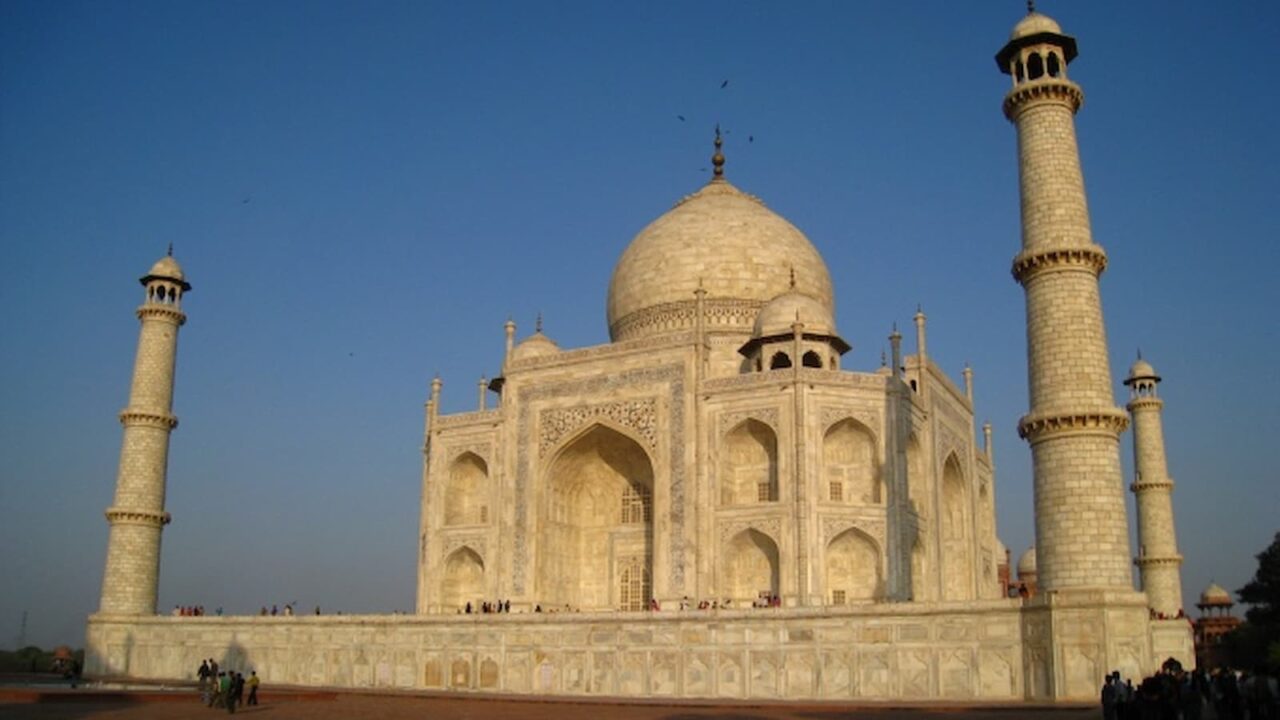Taj Mahal turning green: The Taj Mahal, one of the seven marvels, is undergoing a brown-green color change due to the escalating pollution levels in the Yamuna River. The river floor’s insect life imparts a green hue to the mausoleum’s facade. To discover a solution, the Archaeological Survey of India is undertaking a year-long investigation.
As pollution levels rise in New Delhi, the Taj Mahal becomes verdant. One must ponder the relationship between pollution and the Taj Mahal’s verdant transformation. One of the seven marvels of the world, the Taj Mahal, is undergoing a color change due to an insect that is only visible during the Yamuna River’s pollution increase. The alteration in hue of the magnificent structure is a subject of concern for the Archaeological Survey of India (ASI). This is not a recent occurrence, but it has been a source of contention for ASI for many years.
The statement made by the Archaeological Survey of India (ASI)
According to the ASI, the Goeldichironomus insect’s excrement is responsible for the brown-green stains seen on the Taj Mahal façade, particularly on the stonework and floral motifs located on the north side facing the river.
Top Couple Traveling Destinations in India
When were the traces initially observed?
These stains were initially identified in 2015 and treated temporarily using a mudpack. These occurrences have transpired nearly every six months, except 2020, when pollution levels in Agra were comparatively reduced. Initially, ASI removed the discoloration using distilled water and a soft cotton cloth.
What will transpire in 2023?
Insect reproduction persisted this year despite the declining temperature, which is atypical for this season. Historically, the Goeldichironomus insects were primarily observed on the north wall of the Taj and would have vanished by late October.
What would be the remedy?
The Chemical Branch of the ASI is conducting an exhaustive investigation into the insect’s breeding practices, behavior, and potential safeguards for the Taj Mahal. Typically, the insects migrate from the Yamuna River during March, April, and October, when temperatures range from 28 to 35 degrees Celsius.
Is an enduring resolution feasible?
According to several media outlets, maintaining Yamuna’s cleanliness is the only way to protect this world wonder.
Goeldichironomus arthropods
Goeldichironomus insects are among the most prevalent Chironomidae species in both natural and artificial environments. Their application in water quality assessments is extensive.
Dr. Girish Maheshwari of the School of Entomology at St John’s College in Agra stated in an article for the Ground Report that the Goeldichironomus insect’s larvae consume river phytoplankton before maturing into adults. Attracted to the white marble of the Taj Mahal, these insects leave green stains on its walls when they perch and expel waste due to the chlorophyll in their bodies. They are thus an indicator of the quality of the water. Female insects often lay more eggs, sometimes more than a thousand at once, when there are high concentrations of phosphorus in the river due to pollution and sediments.
Mahatma Taj
Shah Jahan, the Mughal emperor, constructed the Taj Mahal, a magnificent mausoleum crafted from ivory-white marble, as a tribute to his cherished wife, Mumtaz Mahal. It is one of the seven marvels of the world. It was constructed in 1631 to contain the tombs of Mumtaz Mahal and Shah Jahan.


















